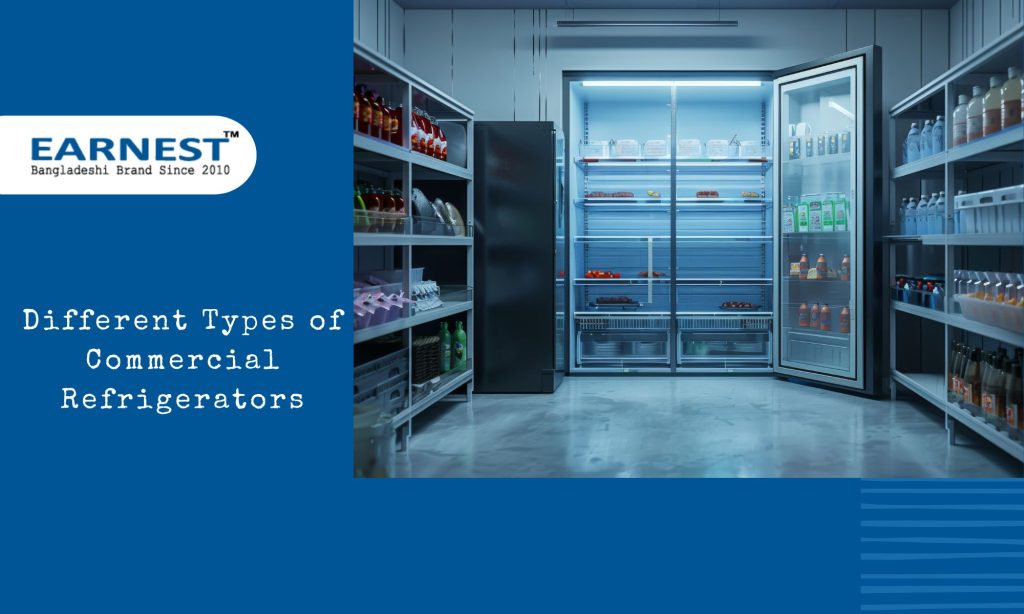High humidity environments are incredibly uncomfortable to work in and can cause substantial damage. Industrial workspaces are more likely to suffer from poor insulation and, thereby, extreme temperatures. This may lead to irreversible damage to products as well as machinery and result in significant losses.
Industrial dehumidifiers in Bangladesh are even more essential when our country is hot and humid naturally. They necessarily remove the excessive humidity in the working environment. Continue reading to find out about the four different types of industrial dehumidifiers for warehouses and workspaces.
Also Read: Industrial Uses of Commercial Grade Dehumidifier
1. Chemical Absorbent Dehumidifiers
Chemical Absorbent Dehumidifiers, Also known as desiccant dehumidifiers, these machines employ hydrophilic substances such as silica gel to remove moisture from the air. They function by pulling air into the dehumidifier and passing it over a wheel of silica gel that is constantly rotating. This gel wheel absorbs the water from the air. The wheel has reactivation air, which is used to release the moist air into the building’s ventilation system.
Desiccant dehumidifiers are best suited for cold climates and low humidity atmospheres. As they do not have a compressor, they are much quieter compared to other industrial dehumidifiers. They can be used in subzero temperatures as they do not condense.
2. Refrigeration Dehumidifiers
This refrigerator-style industrial or commercial dehumidifier in Bangladesh is extremely popular and widely used.
Refrigerated evaporators are used to pull moist air in with the help of a fan. The evaporators usually have a coiled tube, microchannel, or a fin and tube. The refrigeration device is used to condense water, which is then removed, and the coiled tube is used to reheat the air. The warmed air is later released back into the room.
Electric refrigeration dehumidifiers function most efficiently in high ambient temperatures. A high dew point temperature can facilitate better functioning while it is not as effective in colder climates.
3. Ionic Membrane Dehumidifiers
Ionically charged membranes in Ionic dehumidifiers work at a molecular level to create and regulate humidity. These types of machines are ideal for areas with difficult access, such as those found on rooftops or inside buildings that do not have open spaces where maintenance can take place easily.
Ionic Membrane Dehumidifiers use an ionic membrane to facilitate the movement of humidity in or out of a secured area. They use molecules and a solid polymer electrolyte (SPE) to operate. However, they do not have immense dehydration capacities and are appealing due to their low maintenance status. Since the removal of moisture is done through electrolysis, the required electrical energy is minimal.
Also Read: Things to consider about while buying a cold storage
Ionic Membrane Dehumidifier can be used to protect delicate electrical parts, scientific apparatus, medical equipment, or museum specimens. Applying voltage to the porous electrode of the SPE can dissociate the water into hydrogen and oxygen ions. Oxygen is then released into the enclosure.
4. Condensate Dehumidifiers
Condensate dehumidifiers are a great choice for those in the industrial, commercial, and warehouse sectors. In a world of liquid and gas plumbing, condensate dehumidifiers have become an integral part for processes that require water removal.
No matter what industry you work in- from food preparation to chemical production, if there is equipment using it then chances are good we sell them too!
This type of dehumidifier uses a cold device to remove water from the air, and this water known as condensate. This type of water does not contain any waste matter, which allows it to be used for industrial purposes. Due to this, some dehumidifiers are manufactured with reverse osmosis filters that can make the condensate potable water.
This feature reduces the waste produced, which lowers expenses. The greywater is cleaned and released in a liquid form instead of the vapor produced by other types of dehumidifiers.
Video Credit – Technical Concept
Factors Used to Choose the Right Type of Dehumidifier
Different dehumidifiers are used in different industries, depending on the features they offer. Choosing the right dehumidifier for your industry should be done after considering these factors.
· Efficiency
The efficiency of a dehumidifier can be determined by the Energy Factor (EF). This describes the amount of water the machine can extract from the air per kilowatt-hour (kWh) of electricity used by it. The bigger the EF, the more efficient the machine can be. Most often, sizable dehumidifiers are the most efficient.
· Capacity
This indicates the pints of water that can be removed from the air in 24 hours (pints per day). This entails standard conditions of temperature and relative humidity. Larger capacity dehumidifiers can remove 50 to 75 pints per day (ppd), while medium can handle 45 to 50 ppd. Small capacity units can remove 35 to 40 ppd.
· Function
Dehumidifiers are categorized according to their functions. Whole-house dehumidifiers have a tremendous capacity to use in a home air system. Some dehumidifiers are crafted for small spaces and basements. These have features that can tackle high-moisture and low-temperature conditions depending on the environment.
Contacting your industrial dehumidifier suppliers for warehouses in Bangladesh will help you choose the right type of dehumidifier to fulfill your needs. Depending on the nature of the industry, making an informed choice is crucial. If this is not done, it could lead to potential damage to expensive machinery due to the harmful effects of moisture.






